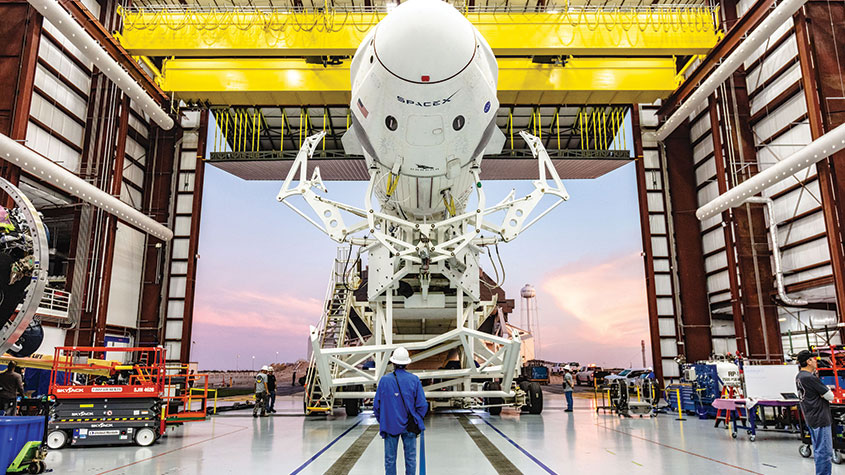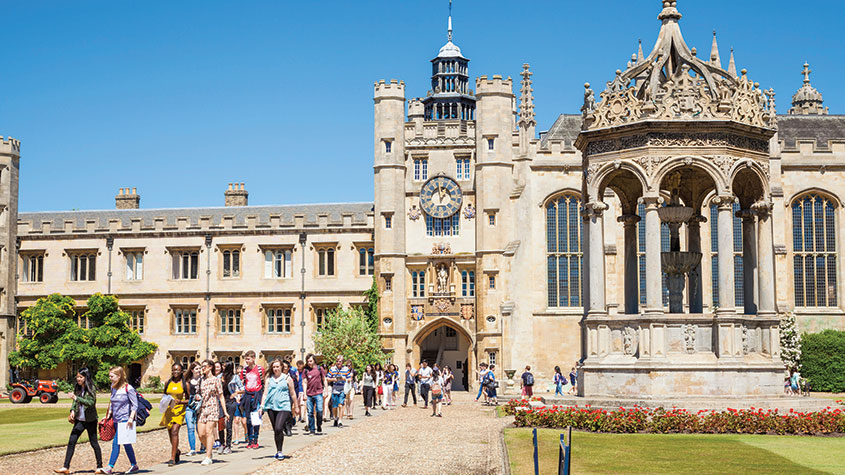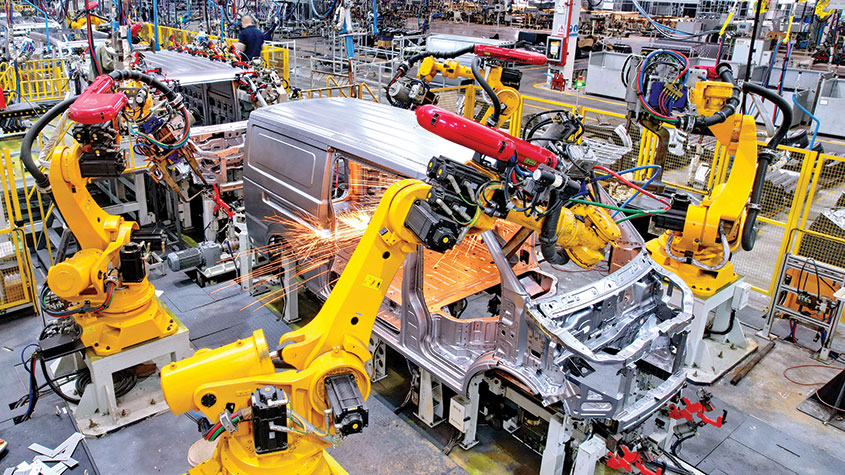The secrets of Asia’s economic success
Investors dream of the profits to be made from billions of emerging-market consumers, but first these countries will need to become wealthier. That’s more of a challenge than it sounds, says Cris Sholto Heaton.


The week marks the start of the Year of the Pig in the Chinese zodiac. Pigs symbolise prosperity and good fortune but there's little good news coming out of Asia at present. China's economy is slowing abruptly; the government last week began recapitalising banks in an effort to get them to lend more and support consumption. The outcome of India's general election in May is highly uncertain, increasing the risk of erratic policymaking as the ruling party tries to shore up support. Other major economies are also weakening: South Korea expanded at the slowest rate in six years in 2018.
Some data still looks encouraging: GDP growth of 6.2% in the Philippines is not to be sniffed at. Yet even that represents a slowdown. The general trend across the region is clear and since the wider global economy looks wobbly even ignoring the risk that the trade dispute between China and the US spirals into a full-on trade war we must assume it will get worse.
Investors in emerging Asia have done pretty well over the past decade since the global financial crisis. The MSCI Asia ex-Japan index has returned an average of 11.8% per year in US dollar terms, slightly better than the MSCI World index of developed markets. And yet Asia still looks better value: the MSCI Asia ex-Japan trades on a price/earnings (p/e) ratio of about 12.5, compared with about 16.5 for the MSCI World. The question is whether we can expect these kinds of gains to resume once we get past any global slowdown or whether they are the ephemeral result of a world awash in liquidity. To answer that, we need to reflect on why investors tend to get excited about Asian economies in the first place.
MoneyWeek
Subscribe to MoneyWeek today and get your first six magazine issues absolutely FREE

Sign up to Money Morning
Don't miss the latest investment and personal finances news, market analysis, plus money-saving tips with our free twice-daily newsletter
Don't miss the latest investment and personal finances news, market analysis, plus money-saving tips with our free twice-daily newsletter
The greatest growth story in history
What makes Asia different to other emerging markets is its record of rapid and transformative growth. All the outstanding development success stories of the post-war era have been in the region. Back in 1960, Japan had a GDP per capita of $480, according to World Bank data. Brazil was on $210 and South Africa on $430, to take two benchmarks for other emerging regions. By 2017, Japan's GDP per capita had grown to more than $38,800, while Brazil stood at just $9,800 and South Africa at $6,150.Japan may seem like an unfair standard to choose: after all, it already had an industrial economy prior to World War II, so its post-war recovery and boom was in some respects a case of reconstruction rather than development (although its economy became far broader, more sophisticated and outward-looking). However, this certainly wasn't the case for South Korea, which grew from a GDP per capita of $160 to $29,750 higher than European economies such as Greece and Portugal. Taiwan did almost as well. Although both are still classified as emerging markets by MSCI, that is because of some minor restrictions on access for foreign investors, rather than development both are sophisticated, technologically advanced economies. More recently, China has grown to be a major economic power. While it is not yet a rich economy overall and some parts of the country remain very poor, the development of eastern provinces and especially its major cities is far more advanced than a national GDP per capita of $8,800 suggests.
"All the outstanding success stories of the post-war era have been in Asia"
But not all Asian economies have been quite so successful. In 1960, the second-wealthiest country in the region was the Philippines, an economy that has clearly failed to keep pace with its peers. The same is true of others such as Indonesia, Malaysia and Thailand all have had periods of rapid growth, but have not yet become advanced, wealthy economies.
Optimists see this as an opportunity. Given enough time, these economies are likely to follow in the tracks of Japan, South Korea, Taiwan and China. This should lead to rapid growth in the number of people with disposable income, hugely boosting consumption: some 3.5 billion people in Asia will be classified as middle class by 2030 and will account for 50% of global middle-class consumption, according to a projection by the Brookings Institution, a US think tank. Yet that outcome is by no means certain.
Demographics is not destiny
The standard argument about why emerging markets offer better prospects than developed markets typically comes down to demographics. Unlike most developed economies, emerging economies tend to have relatively young populations. This means there's an abundance of young workers and a shortage of retirees, which should power growth. And it's true that the explosive growth of Asia's success stories was built on this "demographic dividend".
Yet while youthful demographics are probably necessary for very rapid growth, they are not sufficient by themselves. If they were, countries such as India, Indonesia and the Philippines would have kept up with their regional peers. And other regions of the world including most of Africa would be doing far better than they are. Something else is necessary: without it, youthful populations turn out to be wasted potential at best and a recipe for severe instability at worst.
Exactly what drives rapid development is a matter of debate among economists, but a very readable analysis of what Asian economies did right and wrong can be found in How Asia Works by Joe Studwell. Anybody who invests in the region would do well to dip into this wide-ranging book, which makes a controversial but compelling case that three key policies have separated the stars from the also-rans.
First, successful countries carried out land reform: breaking up estates that were owned by wealthier landlords and redistributing them as small plots of land among rural households. This led to very labour-intensive agriculture at a time when opportunities elsewhere were scarce, which hugely improved yields. That helped maximise agricultural exports and boosted both domestic consumption and savings.
"The success stories were overseen by governments that set out to mould their economies"
Second, governments encouraged investment in industries that provided low-skilled work as labourers began to move out of agriculture. They combined that with policies that encouraged manufacturers to export around the world and to keep moving up the value chain. Importantly, exporters were supported but not cosseted: unsuccessful ones went out of business.
Third, the financial sector was relatively tightly regulated and focused on supplying credit to agriculture and then to successful manufacturing exporters (while unsuccessful firms were cut off). Capital controls helped strengthen state influence over the financial sector as well as insulate these economies from the ebb and flow of global markets.
The role of good government
Even if you accept that these policies helped power development, they may not be the only route. Hong Kong and Singapore are obvious examples of Asian economies that followed a slightly different path although as small city states located on major trade routes, their approach isn't directly transferable to larger countries. Other factors may also have played a role, such as infrastructure and education policy. And this model may not spur such rapid growth in future: focusing on export manufacturing might well be less successful if the world becomes more protectionist and decades of growth in global trade goes into reverse.
Still, it's hard to get around the conclusion that the success stories avoided the most laissez-faire prescriptions for emerging economies advocated by institutions such as the World Bank and the International Monetary Fund. They were instead overseen by governments that unambiguously set out to mould their economies. Businesses were allowedto grow big and individuals to grow rich, but itwas mostly expected that what they did would contribute to the development of the economy.
In contrast, in Southeast Asia much wealth is controlled by tycoons and large land-owning families, whose business investments have generally done little to help their economies advance. In particular, Southeast Asian countries have not produced manufacturers that control their own brands and intellectual property and that export around the world. Instead, manufacturing plants work for or are owned by foreign companies, such as Japanese carmakers and electronics firms in Thailand. The only Southeast Asian economy that came close to emulating the more successful East Asian nations in industrial policy is Malaysia, which coincidentally or not is still the wealthiest of the group (excluding Singapore).
Hence while Southeast Asian economies have grown at a reasonable pace over the last few years, they have not come close to the double-digit rates that the stars achieved at their peak. Indonesia and the Philippines, meanwhile, are notching up annual growth rates of 5%-7%, yet the experience of other Asian economies suggests they might have done better with different policies.
Tomorrow's winners
This implies investors who expect other emerging Asian economies to become economic powerhouses regardless of what their leaders do will be disappointed. Vietnam is the country that looks most like the East Asian economies did at a similar stage of development, but the government has made plenty of mistakes over the last few years and success is not assured. This is very much an early-stage market (the first stock exchange was only set up in 2000) and it will be volatile and uncertain for many years to come. The MSCI Vietnam index trades on a steep p/e ratio of 22, and it's hard to avoid the feeling there will be chances to buy more cheaply in a future downturn. But it's the only economy that could still follow exactly the same model, which makes it an intriguing long-term bet.There is little prospect of undoing the crony capitalism that has held back both Indonesia and the Philippines; it's a matter of letting a more dynamic economy spring up in the gaps. Both have made positive steps in recent years, but a vast amount remains to be done. However, there is potential for decent long-term growth, even if it's not as exciting as it could be.
"India is one of Asia's best stockmarkets but it's never cheap"
Politics is the big concern in both: Indonesia is heading into a presidential election that could prove a make-or-break moment (as Jonathan Compton wrote in MoneyWeek last month), while the election of Rodrigo Duterte in the Philippines was a huge step backwards after the relatively clean and competent Benigno Aquino administration. And local firms' weakness for borrowing in dollars a key factor in the 1997-1998 Asian crisis always makes one worry what will happen when the global economy turns down and liquidity dries up. On p/e ratios of 18 and 20 respectively, both look too expensive for now.
Thailand's forthcoming election in March is unlikely to break the depressing cycle of the public voting for populist governments and the elite squashing any efforts at reform through political trickery. On a p/e of almost 15, the market is also no longer cheap, which has helped it deliver decent returns in the past. One to avoid. In Malaysia, the return of former prime minister Mahathir Mohamad is encouraging; although flawed, he's probably the most competent leader the country has had. But at 92, he's unlikely to be in charge long enough to implement all the reforms needed. A p/e of 17 is pricing in a lot of optimism.
That leaves India. This is one of Asia's best stockmarkets and is consequently almost never cheap but a p/e of 23 looks a real stretch at a time when China, Japan, Hong Kong, Singapore and Taiwan trade on 12-13 and Korea is even cheaper (see below). Many parts of the economy are dynamic, yet others are stifled by regulation. The services sector is impressive, but large-scale export manufacturing will never take off without reforms to labour markets and land acquisition and there is no prospect of moving people from subsistence farming into a modern economy without low-skilled manufacturing as an intermediate step. So there is a risk that growth only ever benefits a minority of the population and leaves many without productive employment. The next few years will be crucial in determining whether India can achieve its potential or whether investors' hope of a vast new middle class will evaporate. None of this means, however, that there aren't still plenty of opportunities in the region. We look at the best betsbelow.
Eight investment trusts to play Asia
The simplest way to invest in Asia is through a generalist fund such as Pacific Assets Trust (LSE: PAC), managed by Stewart Investors. This is a fairly diversified fund, albeit biased towards India at present (34% of the portfolio), and focuses on higher-quality businesses. It has ongoing costs of 1.3% and the shares trade roughly in line with the net asset value (NAV) at present. The Schroder AsiaPacific Fund (LSE: SDP) is more biased towards East Asian economies and to cyclical and technology stocks. Ongoing costs are 0.94% and the current discount to NAV is 10%
The Scottish Oriental Investment Trust (LSE: SST), also run by Stewart Investors, and the Aberdeen Standard Asia Focus (LSE: AAS) previously the Aberdeen Asian Smaller Companies Investment Trust invest in smaller companies. These can often provide the best opportunities, even in markets that are otherwise not that compelling, because they are under-researched and under-owned by institutional investors. Both have strong long-term records, although SST has seen some manager turnover in recent years, raising the question of whether the strategy that worked in the past will change. Ongoing costs are 1.01% and 1.23% respectively, and both trade on a discount to NAV of around 10%.
Regional funds are often a better choice than single-country funds. Many individual emerging markets don't have a sufficiently large number of good quality companies trading at reasonable valuations to fill a portfolio, which means you end up owning a tail of less compelling investments. India is a possible exception because it has a diverse and long-stablished stockmarket (the Bombay Stock Exchange was set up back in 1875).The Aberdeen New India Investment Trust (LSE: ANII) is an obvious choice if you want to concentrate on India. It has ongoing costs of 1.25% and is on a discount to NAV of 13%.
Vietnam is a non-existent or tiny component of most Asian funds, reflecting the fact that this is a still a young and volatile market with a shortage of good companies (it's technically a frontier market under MSCI's classification, although it is more liquid and diverse than some emerging markets). That should be a reminder that any investment in Vietnam is a long-term and risky prospect. But if you're tempted, consider Vietnam Enterprise Investments (LSE: VEIL) and VinaCapital Vietnam Opportunity Fund (LSE: VOF). These trade on discounts of 8% and 15% to NAV respectively. Note that VOF owns more unlisted assets, so it should trade on a large discount. The respective ongoing charges are 2.23% and 3.87% (including performance fees).
Finally, the Weiss Korea Opportunity Fund (Aim: WKOF) is an interesting niche fund. Korea trades at a discount to similar Asian markets, in part due to weak corporate governance: it's on a p/e ratio of just 8.5. This fund invests in non-voting shares, which tend to trade at a further discount to voting shares (currently an average of 40% for its portfolio).
If governance improves, both Korea's discount to other markets and the difference between voting and non-voting stock may shrink. The fund trades at NAV and has ongoing costs of 1.81%.
Get the latest financial news, insights and expert analysis from our award-winning MoneyWeek team, to help you understand what really matters when it comes to your finances.
Cris Sholto Heaton is an investment analyst and writer who has been contributing to MoneyWeek since 2006 and was managing editor of the magazine between 2016 and 2018. He is especially interested in international investing, believing many investors still focus too much on their home markets and that it pays to take advantage of all the opportunities the world offers. He often writes about Asian equities, international income and global asset allocation.
Cris began his career in financial services consultancy at PwC and Lane Clark & Peacock, before an abrupt change of direction into oil, gas and energy at Petroleum Economist and Platts and subsequently into investment research and writing. In addition to his articles for MoneyWeek, he also works with a number of asset managers, consultancies and financial information providers.
He holds the Chartered Financial Analyst designation and the Investment Management Certificate, as well as degrees in finance and mathematics. He has also studied acting, film-making and photography, and strongly suspects that an awareness of what makes a compelling story is just as important for understanding markets as any amount of qualifications.
-
 Five ‘bear traps’ to look out for this bonus season – and four ways to lessen the blow
Five ‘bear traps’ to look out for this bonus season – and four ways to lessen the blowMarch is the peak month for bonuses, but it can lead to tax and pension issues. We look at four ways to protect your hard-earned money.
-
 Saba pursues more closed-ended funds
Saba pursues more closed-ended fundsActivist investor Saba Capital Management could move against more UK closed-ended funds. Some trusts are taking pre-emptive action.
-
 Invest in space: the final frontier for investors
Invest in space: the final frontier for investorsCover Story Matthew Partridge takes a look at how to invest in space, and explores the top stocks to buy to build exposure to this rapidly expanding sector.
-
 Invest in Brazil as the country gets set for growth
Invest in Brazil as the country gets set for growthCover Story It’s time to invest in Brazil as the economic powerhouse looks set to profit from the two key trends of the next 20 years: the global energy transition and population growth, says James McKeigue.
-
 5 of the world’s best stocks
5 of the world’s best stocksCover Story Here are five of the world’s best stocks according to Rupert Hargreaves. He believes all of these businesses have unique advantages that will help them grow.
-
 The best British tech stocks from a thriving sector
The best British tech stocks from a thriving sectorCover Story Move over, Silicon Valley. Over the past two decades the UK has become one of the main global hubs for tech start-ups. Matthew Partridge explains why, and highlights the most promising investments.
-
 Could gold be the basis for a new global currency?
Could gold be the basis for a new global currency?Cover Story Gold has always been the most reliable form of money. Now collaboration between China and Russia could lead to a new gold-backed means of exchange – giving prices a big boost, says Dominic Frisby
-
 How to invest in videogames – a Great British success story
How to invest in videogames – a Great British success storyCover Story The pandemic gave the videogame sector a big boost, and that strong growth will endure. Bruce Packard provides an overview of the global outlook and assesses the four key UK-listed gaming firms.
-
 How to invest in smart factories as the “fourth industrial revolution” arrives
How to invest in smart factories as the “fourth industrial revolution” arrivesCover Story Exciting new technologies and trends are coming together to change the face of manufacturing. Matthew Partridge looks at the companies that will drive the fourth industrial revolution.
-
 Why now is a good time to buy diamond miners
Why now is a good time to buy diamond minersCover Story Demand for the gems is set to outstrip supply, making it a good time to buy miners, says David J. Stevenson.
